Ditapis dengan
E-book Error-Correction Coding and Decoding : Bounds, Codes, Decoders, Analys…
The sphere packing bound by Shannon [18] provides a lower bound to the frameerror rate (FER) achievable by an(n,k,d)code but is not directly applicable tobinary codes. Gallager [4] presented his coding theorem for the average FER forthe ensemble of all random binary(n,k,d)codes. There are 2npossible binarycombinations for each codeword which in terms of then-dimensional signal spacehyp…
- Edisi
- -
- ISBN/ISSN
- 978-3319511030
- Deskripsi Fisik
- 527 hlm
- Judul Seri
- -
- No. Panggil
- 621.382 TOM e

E-book Encyclopedia of Dinosaurs and Prehistoric Life
A spectacularly illustrated, comprehensive guide to the prehistoric world and the plants and animals that lived there provides in-depth discussions of early Earth's climates and conditions, and the life forms that flourished and floundered throughout each era. Reprint.
- Edisi
- -
- ISBN/ISSN
- 9780756638368
- Deskripsi Fisik
- 378 halaman, ilus.
- Judul Seri
- -
- No. Panggil
- 567.9 BLO e
E-book Understanding Public Debates : What Literary Studies Can Do
This book makes the case that literary studies can play a key role in un-derstanding public debates in present-day pluralist democracies1 – by his-toricizing and contextualizing them through readings of carefully selected literary texts. The debates I discuss include those on different conceptions of liberty (as they arose, say, during the COVID pandemic), on identity politics an…
- Edisi
- -
- ISBN/ISSN
- 9781032758589
- Deskripsi Fisik
- 224 hlm
- Judul Seri
- -
- No. Panggil
- 620 GUR u
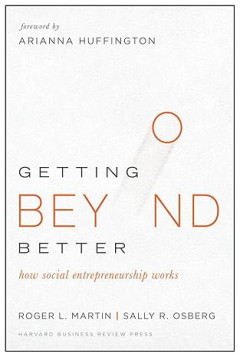
E-book Getting Beyond Better: How Social Entrepreneurship Works
Who drives transformation in society? How do they do it? In this compelling book, strategy guru Roger L. Martin and Skoll Foundation President and CEO Sally R. Osberg describe how social entrepreneurs target systems that exist in a stable but unjust equilibrium and transform them into entirely new, superior, and sustainable equilibria. All of these leaders--call them disrupters, visionaries,…
- Edisi
- -
- ISBN/ISSN
- 9781633690684
- Deskripsi Fisik
- 141 halaman
- Judul Seri
- -
- No. Panggil
- 338.04 MAR t
E-book Life Cycle Assessment of Indoor Vertical Farms
It is becoming increasingly important to find solutions for more resilient food production methods closer to urban environments with less vulnerability to supply-chain shocks (Benke and Tomkins, 2017; O’Sullivan et al., 2020; Pulighe and Lupia, 2020). Indoor vertical farming (IVF1) systems have emerged worldwide as a result of the need for more resilient food provisioning.…
- Edisi
- -
- ISBN/ISSN
- 9781801465519
- Deskripsi Fisik
- 23 hlm
- Judul Seri
- -
- No. Panggil
- 635 MAR l
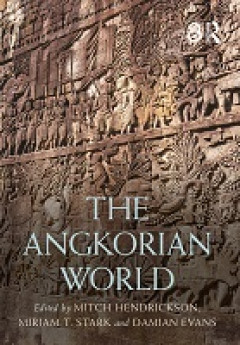
E-book Perspectives on the "Collapse" of Angkor and the Khmer Empire (Chapter…
The Angkorian World explores the history of Southeast Asia’s largest ancient state from the first to mid-second millennium CE. Chapters by leading scholars combine evidence from archaeology, texts, and the natural sciences to introduce the Angkorian state, describe its structure, and explain its persistence over more than six centuries. Comprehensive and accessible, this book will be an indis…
- Edisi
- -
- ISBN/ISSN
- 9780815355953
- Deskripsi Fisik
- 14 halaman
- Judul Seri
- -
- No. Panggil
- 930.1 EVA p
E-book Rural Granaries in Northern Gaul (Sixth Century BCE – Fourth Century…
Compared with other pre-industrial societies, a rather high percentage of the Roman population in the Gallic and Germanic provinces was not involved in agrarian production during the High Empire. Rural produce was needed to feed soldiers and the inhabitants of vici, small towns and cities. To maintain this system the Gallo-Roman villae – the rural settlements whose…
- Edisi
- Vol. 8
- ISBN/ISSN
- 9789004389045
- Deskripsi Fisik
- 195 hlm
- Judul Seri
- -
- No. Panggil
- 930 MAR r

Tanah Air yang Hilang
Buku ini mengumpulkan cerita 19 orang Indonesia yang terpaksa kehilangan tanah air dan tinggal di berbagai sudut Eropa. Mereka berkelana menyeberangi berbagai batas negara dalam ketakutan, tanpa paspor, untuk menghindari pengejaran yang dilancarkan oleh sebuah rezim yang bertahta berdasawarsa lamanya. Ketika mendapat suaka di negara baru, mereka lega. Ketika pulang ke Indonesia, mereka menggun…
- Edisi
- Cet. 1
- ISBN/ISSN
- 9786024122874
- Deskripsi Fisik
- xviii, 344 hlm; 13,5 x 21 cm
- Judul Seri
- -
- No. Panggil
- 959.8 mAR t
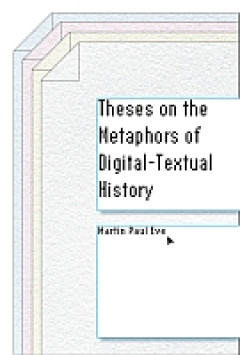
E-book Theses on the Metaphors of Digital-Textual History
Digital spaces are saturated with metaphor: we have pages, sites, mice, and windows. Yet, in the world of digital textuality, these metaphors no longer function as we might expect. Martin Paul Eve calls attention to the digital-textual metaphors that condition our experience of digital space, and traces their history as they interact with physical cultures. Eve posits that digital-textual metap…
- Edisi
- -
- ISBN/ISSN
- 9781503614888
- Deskripsi Fisik
- 436 halaman
- Judul Seri
- -
- No. Panggil
- 006.7 EVE t
E-book Data Disclosure : Global Developments and Perspectives
Within the research project,one of the first steps was to select the eight countries /jurisdictionsto be examined. The aim was to achieveawidelyspread representa-tion of regionsaround the globe, restrictingthe scope toamanageable number ofjurisdictions (eight)while allowing for diversity,explicitly focusing on the inclusionof nations in the global south. The aim of achievingdiversity is related…
- Edisi
- -
- ISBN/ISSN
- 9783111010601
- Deskripsi Fisik
- 229 hlm
- Judul Seri
- -
- No. Panggil
- 341 HOF d
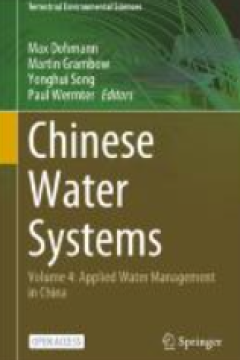
E-book Chinese Water Systems : Applied Water Management in China
With increased political and academic concerns, the term “water governance” hasbeen debated that it responds to challenges of sustainable development [42]. TheOrganization for Economic Co-operation and Development (OECD) defines watergovernance as a “range of political, institutional and administrative rules, practicesand processes (formal and informal) through which decisions are taken a…
- Edisi
- Volume 4
- ISBN/ISSN
- 9783030802349
- Deskripsi Fisik
- 293 hlm
- Judul Seri
- -
- No. Panggil
- 551.4851 CHE c
E-book Sustainable Rice Straw Management
Rice straw is a residual byproduct of rice production at harvest. The total biomass of this residue depends on various factors such as varieties, soils and nutrient man-agement and weather. At harvest, rice straw is piled or spread in the field depending on the harvesting methods, using stationary threshers or self-propelled combine harvesters, respectively. The amount of rice straw t…
- Edisi
- -
- ISBN/ISSN
- 9783030323738
- Deskripsi Fisik
- 199 hlm
- Judul Seri
- -
- No. Panggil
- 333.7 ALL s
E-book Freshwater Microplastics : Emerging Environmental Contaminants?
Anthropogenic activity has resulted in the deposition of a complex combination ofmaterials in lake sediments, including synthetic polymers (plastics) that differgreatly from the Holocene signatures. Accordingly, plastics are considered oneindicator of the Anthropocene [1]. Plastic has for some time been known to be amajor component of riverine pollution [2–6], and plastic degradation products…
- Edisi
- -
- ISBN/ISSN
- 9783319616155
- Deskripsi Fisik
- -
- Judul Seri
- -
- No. Panggil
- 551.9 LAM f
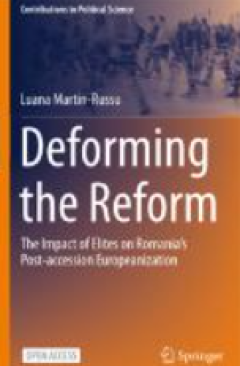
E-book Deforming the Reform : The Impact of Elites on Romania’s Post-access…
On 1 January 2007, Romania became a full member of the European Union. Thestatethat joined the EU was already since 1991 a constitutional republic with abicameral Parliament elected by popular vote and with a dual executive formed by adirectly elected president and an appointed prime minister. In the lead-up to itsaccession, Romania had to amend and adopt numerous laws in order to bring themint…
- Edisi
- -
- ISBN/ISSN
- 9783031110818
- Deskripsi Fisik
- 224 hlm
- Judul Seri
- -
- No. Panggil
- 320 MAR d
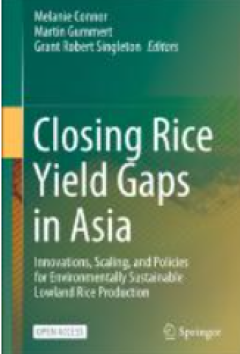
E-book Closing Rice Yield Gaps in Asia : Innovations, Scaling, and Policies f…
Agricultural development in Asia has undergone multiple phases and has experienced a remarkable evolution that also advanced general economic development. The region has become a major agricultural producer in the world due to the Green Revolution in the second half of the twentieth century (Hazell 2009). In particular, its rice exports have become essentia…
- Edisi
- -
- ISBN/ISSN
- 9783031379475
- Deskripsi Fisik
- 282 hlm
- Judul Seri
- -
- No. Panggil
- 338.1 BAL c
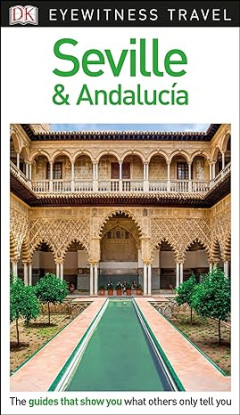
E-book Eyewitness Travel: Seville & Andalucia
From beautiful palaces such as Seville's Real Alcázar and the magical Alhambra in Granada, splendid religious edifices such as the Mezquita in Córdoba, Seville Cathedral and La Giralda, to the historic coastal cities of Málaga and Cádiz, DK Eyewitness Travel Guide: Seville & Andalucía will show you all of the top sights in this especially colorful part of Spain. Learn about Hispano-Moorish…
- Edisi
- -
- ISBN/ISSN
- 9780241306017
- Deskripsi Fisik
- 290 halaman, ilus.
- Judul Seri
- -
- No. Panggil
- 910 BAI e
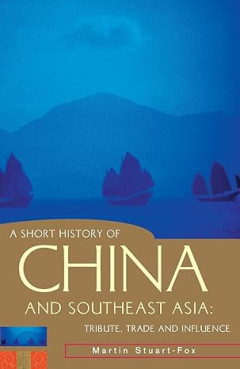
E-book A Short History of China and Southeast Asia: Tribute, Trade and Influence
This informative but concise history of China and Southeast Asia is perfect for travelers, students, teachers, and businesspeople. Portable and attractively designed, it includes color illustrations, maps, and a brief history of the region. Explored are relations between China and Southeast Asia across two millennia; patterns of diplomacy, commercial networks, and migration; and how these have …
- Edisi
- -
- ISBN/ISSN
- 9781864489545
- Deskripsi Fisik
- 289 halaman
- Judul Seri
- -
- No. Panggil
- 931 STU a
E-book Armed Conflict and Environment : From World War II to Contemporary Asy…
This is the longest of any discussion of the subject. The leading militarytheorists always have known that an entire war or single military opera?tions do not take place in sandboxes, but in the field of battle. Since theNapoleonic Wars, the social conditions of war, Clausewitz called it will,have repeatedly being discussed, taking into account the influence of natu?ral factors on warfare, terr…
- Edisi
- -
- ISBN/ISSN
- 9783845293868
- Deskripsi Fisik
- 2018
- Judul Seri
- -
- No. Panggil
- 362.8 BRI a
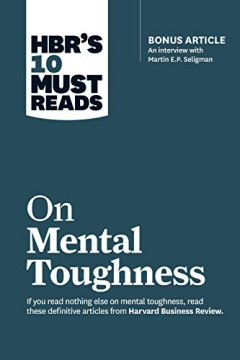
E-book HBR's 10 Must Reads on MENTAL TOUGHNESS
This collection of articles includes "How the Best of the Best Get Better and Better," by Graham Jones; "Crucibles of Leadership," by Warren G. Bennis and Robert J. Thomas; "Building Resilience," by Martin E.P. Seligman; "Cognitive Fitness," by Roderick Gilkey and Clint Kilts; "The Making of a Corporate Athlete," by Jim Loehr and Tony Schwartz; "Stress Can Be a Good Thing If You Know How to Use…
- Edisi
- -
- ISBN/ISSN
- 9781633694378
- Deskripsi Fisik
- 153 halaman, ilus.
- Judul Seri
- -
- No. Panggil
- 153 HAR h
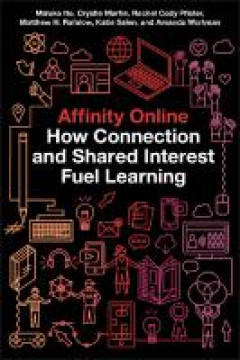
E-book Affinity Online: How Connection and Shared Interest Fuel Learning
How online affinity networks expand learning and opportunity for young people Boyband One Direction fanfiction writers, gamers who solve math problems together, Harry Potter fans who knit for a cause. Across subcultures and geographies, young fans have found each other and formed community online, learning from one another along the way. From these and other in-depth case studies of online affi…
- Edisi
- -
- ISBN/ISSN
- 9781479888900
- Deskripsi Fisik
- 229 halaman
- Judul Seri
- -
- No. Panggil
- 302.23 ITO a
E-book Filming, Researching, Annotating : Research Video Handbook
The handbook Research Video is the introduction to a new kind of software and publication based on annotated videos. Practitioners and researchers who work with motion data, such as those from the fields of performative art, film, behavioral research or sports science, are supported in their work process and are given the opportunity to feed in content that a printed book cannot convey.
- Edisi
- -
- ISBN/ISSN
- 9783035623079
- Deskripsi Fisik
- 169 hlm
- Judul Seri
- -
- No. Panggil
- 741.6 LOS f
E-book Modern Folk Devils : Contemporary Constructions of Evil
Closely intertwined with the folk devil is the moral panic that subsequently arises with public fear. For Cohen, a moral panic typically takes its starting point in big newspaper headlines where the folk devil is pointed out, yet, as this volume demonstrates, today it may as well arise from a grass-root level, in social media, through political discourses or from alre…
- Edisi
- -
- ISBN/ISSN
- 9789523690554
- Deskripsi Fisik
- 296 hlm
- Judul Seri
- -
- No. Panggil
- 364 FRE m
E-book Eyewitness Travel: Top 10 Seoul
One of Asia's cultural capitals, Seoul is the perfect blend of traditional and modern, and is both fashion hub and food lover's paradise. Your DK Eyewitness Top 10 travel guide ensures you'll find your way around this dynamic city with absolute ease. Our regularly updated Top 10 travel guide breaks down the best of Seoul into helpful lists of ten - from our own selected highlights to the bes…
- Edisi
- -
- ISBN/ISSN
- 9780241364642
- Deskripsi Fisik
- -
- Judul Seri
- -
- No. Panggil
- 910 ZAT e
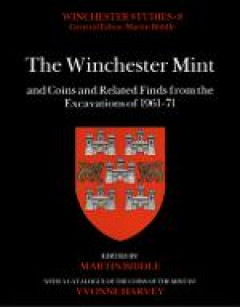
E-Book The Winchester Mint and Coins and Related Finds from the Excavations o…
Edited by Martin Biddle with a catalogue of the known coins of the mint by Yvonne Harvey, this volume records and illustrates the minting of silver pennies in Winchester between the reigns of Alfred the Great and Henry III, a period of three and a half centuries. At the Mint, which was situated in the area of the High Street to the east of where the city’s cross now stands, at least 24 millio…
- Edisi
- -
- ISBN/ISSN
- 9781803270128
- Deskripsi Fisik
- 768 halaman, ilus.
- Judul Seri
- -
- No. Panggil
- 737.49 BID t
E-book Ancient Greence : From Prehistoric to Hellenistic Times
“Most things in the history of Greece have become a subject of dispute” is how Pausanias, the second-century a.d. author of a famous guide to sites throughout Greece, summed up the challenge and the fascination of thinking about the significance of ancient Greek history (Guide to Greece 4.2.3). The subject was disputed then because Pausanias, a Greek, lived and wrote under the Roman Empire,…
- Edisi
- -
- ISBN/ISSN
- 9780300160055
- Deskripsi Fisik
- 325 hlm
- Judul Seri
- -
- No. Panggil
- 938 MAR a
E-book Gianni Versace
Versace posed and provoked the basic issues of fashion's role. Versace tantalized us with vulgarity. In this, he adapted a strategy from the fine arts in the twentieth century, including elements of the banal and coarse in his sensibility. The collage, smarmy joke, offensive imagery, and ready-made object pertinent in the juggernaut of modern art are evidence of an attempt to be vulgar. Versace…
- Edisi
- -
- ISBN/ISSN
- -
- Deskripsi Fisik
- 193 hlm
- Judul Seri
- -
- No. Panggil
- 746.92 MAR g
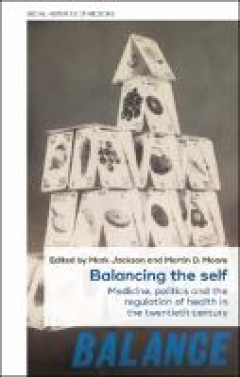
E-Book Balancing the Self: Medicine, Politics and The Regulation of Health in…
Concepts of ‘balance’ have been central to modern politics, medicine and society. Yet, while many health, environmental and social challenges are discussed globally in terms of imbalances in biological, social and ecological systems, strategies for addressing modern excesses and deficiencies have focused almost exclusively on the agency of the individual. Balancing the Self explores the div…
- Edisi
- -
- ISBN/ISSN
- 9781526132123
- Deskripsi Fisik
- 368 halaman
- Judul Seri
- -
- No. Panggil
- 174.2 JAC b
E-book Airport Operations
The planning and operation of airports must, if they are to be successful, take into account the interactions among these three major components or system actors. For the system to operate well, each of the actors must reach some form of equilibrium with the other two. Failure to do so will result in suboptimal conditions, exemplified by a number of undesirable phenomena that are indicators of …
- Edisi
- -
- ISBN/ISSN
- 9780071775854
- Deskripsi Fisik
- 605 hlm
- Judul Seri
- -
- No. Panggil
- 629.1 ASH a
E-book Christian Dior : The Metropolitan Museum of Art
At the waning of this century, we take the occasion of the fiftieth anniversary of Christian Dior's New Look to review the magnificent work he created in a little more than one decade at the century's heart. Few occasions in fashion history are as precise, and few are as worthy of consideration and celebration. It is difficult to analyze Dior today: the intervening four decades have irrevocabl…
- Edisi
- -
- ISBN/ISSN
- 0810965062
- Deskripsi Fisik
- 209 hlm
- Judul Seri
- -
- No. Panggil
- 746.92 MAR c
E-book The Holocaust and Other Genocides : An Introduction
The genocide of the Jews in Europe, known as the Holocaust, is a terrifying example of how mass violence can be used to exterminate an entire population. That, in effect, was the objective of the Holocaust: the mass murder of the Jews of Europe and the destruction of the Jewish people as a whole. The Holocaust provided the background to the Genocide Convention that was adopted by the member sta…
- Edisi
- -
- ISBN/ISSN
- -
- Deskripsi Fisik
- 176 hlm
- Judul Seri
- -
- No. Panggil
- 364.151 HAP t
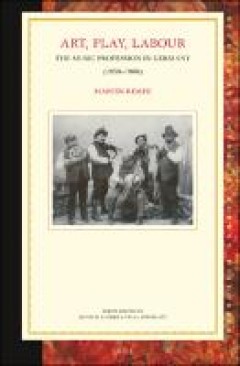
E-Book Art, Play, Labour: the Music Profession in Germany (1850–1960)
Germany is considered a lauded land of music: outstanding composers, celebrated performers and famous orchestras exert great international appeal. Since the 19th century, the foundation of this reputation has been the broad mass of musicians who sat in orchestra pits, played in ensembles for dances or provided the musical background in silent movie theatres. Martin Rempe traces their lives and …
- Edisi
- -
- ISBN/ISSN
- 9789004542723
- Deskripsi Fisik
- 486 halaman
- Judul Seri
- -
- No. Panggil
- 780.9 REM a
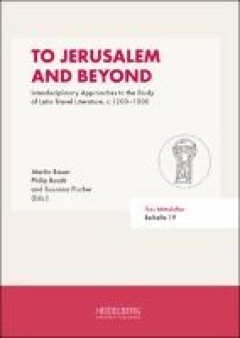
E-Book To Jerusalem and Beyond: Interdisciplinary Approaches to the Study of …
With the expansion of trading routes, pilgrimage, and missionary endeavours in the 13th century, Latin travel literature emerged as a distinctive genre like never before. To highlight the importance of this genre, this volume outlines and explores current and future research trajectories with a focus on Latin travel literature from c. 1200–1500. Combining digital, codicological, literary, phi…
- Edisi
- -
- ISBN/ISSN
- 9783968221298
- Deskripsi Fisik
- 263 halaman
- Judul Seri
- -
- No. Panggil
- 933 FIS t
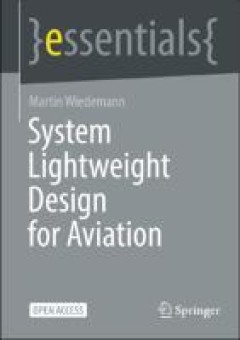
E-Book System Lightweight Design for Aviation
This book presents technologies and methods of lightweight system design to support future low-emission aviation in achieving climate targets. It will be shown how reduction of weight and aerodynamic drag affects the energy consumption of commercial aircraft and what characterizes lightweight system design. Methods, design principles, production technologies and options for functional integrati…
- Edisi
- -
- ISBN/ISSN
- 9783031441653
- Deskripsi Fisik
- 62 halaman
- Judul Seri
- -
- No. Panggil
- 629.1 WIE s
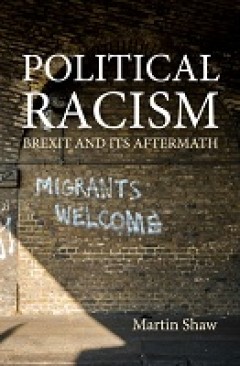
E-Book Political Racism: Brexit and its Aftermath
Political Racism conceptualizes a distinctive form of racism – intentional, organized hostility mobilized by political actors – and examines its role in the Brexit conflict and in the rise of a new nationalist politics in the UK. In a compelling analysis the book argues that Powellite anti-immigrant racism, reinterpreted in numerical terms, was combined with anti-East European and anti-Musl…
- Edisi
- -
- ISBN/ISSN
- 9781788215077
- Deskripsi Fisik
- 184 halaman
- Judul Seri
- -
- No. Panggil
- 304.81 SHA p
The History of Speed : The Quest to go faster, from the Dawn of The Motor Car…
How can Bugatti Chiron travel the distance of one and a half football pitches in one second? What does it feel like to crash at over 360mph? Who was handed the world's first ever speeding ticket? Which land speed car uses rockets that generate the same heat as the inside of a volcano?
- Edisi
- -
- ISBN/ISSN
- 9781471189326
- Deskripsi Fisik
- illust. 19 x 25 cm; 255 hlm
- Judul Seri
- -
- No. Panggil
- 909 ROA t
E-book The Jewel of Annual Astrology : A Parallel Sanskrit-English Critical E…
This perceived hybrid nature of astrology often offends contemporarysensi-bilities, although, from ahistorical perspective,iti is the anachronistic projection of a modern divideon to anancient knowledge system that is to blame. Astrology, classified as a 'pseudoscience' has long been regarded as a liability by orthodox scholars of both science and religion and as a result, academics of either …
- Edisi
- -
- ISBN/ISSN
- 978900443371
- Deskripsi Fisik
- 1045 hlm
- Judul Seri
- -
- No. Panggil
- 133.3 GAN t
E-book Speech and Language Processing : An Introduction to Natural Language P…
One of the unsung successes in standardization in computer science has been the regular expression (often shortened to regex), a language for specifying text search regular expression strings. This practical language is used in every computer language, word processor, and text processing tools like the Unix tools grep or Emacs. Formally, a regular expression is an algebraic notation for charact…
- Edisi
- -
- ISBN/ISSN
- -
- Deskripsi Fisik
- 636 hlm
- Judul Seri
- -
- No. Panggil
- 410 JUR s
E-book Handbook of Space Astronomy and Astrophysics
This ebook contains space Astronomy and Astrophysics.
- Edisi
- -
- ISBN/ISSN
- 9780511348723
- Deskripsi Fisik
- 781 hlm
- Judul Seri
- -
- No. Panggil
- 520 ZOM h
E-book Imposing Standards : The North-South Dimension to Global Tax Politics
Stories of tax- dodging corporate giants make headlines on a weekly basis. None-theless, governments manage to collect over US$2 trillion in corporate income tax each year, much of it from big multinational businesses.1 This book is about the rules governments have negotiated to divide the tax base among themselves: how they are designed to work, rather than how they are circumvente…
- Edisi
- -
- ISBN/ISSN
- 9781501756009
- Deskripsi Fisik
- 247 hlm
- Judul Seri
- -
- No. Panggil
- 336.2 HEA i
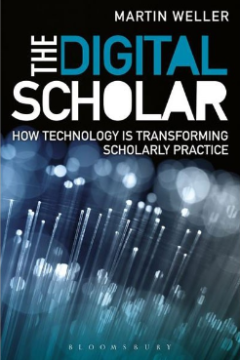
E-book The Digital Scholar : How Technology is Transforming Scholarly Practice
- Edisi
- -
- ISBN/ISSN
- 9781849666268
- Deskripsi Fisik
- viii, 200 hlm
- Judul Seri
- -
- No. Panggil
- 371.344 WEL t
- Edisi
- -
- ISBN/ISSN
- 9781849666268
- Deskripsi Fisik
- viii, 200 hlm
- Judul Seri
- -
- No. Panggil
- 371.344 WEL t
E-book Design Transactions : Rethinking Information Modelling for a New Mater…
Design Transactions asks what the future of building culture will be. It asks how new, shared computational platforms are changing our disciplines, examining how the digitisation of tools affects the way architecture is conceived designed and made. Questions arise as we enter a new era of advanced modelling, informed by new concepts of Big Data computing, cloud-based collaboration and steered r…
- Edisi
- -
- ISBN/ISSN
- 9781787355026
- Deskripsi Fisik
- 115 hlm
- Judul Seri
- -
- No. Panggil
- 729 THO d
E-book Big and Little Histories : Sizing Up Ethics in Historiography
No two histories are the same size. Some are so tiny that you can nestle them in your hand, their translucent pages fluttering with your breath. Others range over many volumes, challenging the strength of your grip with the combined weight of their leather covers, rag paper pages and glassine illustration protectors. Some hold us enthralled with split-second events in tiny places, othe…
- Edisi
- -
- ISBN/ISSN
- 9780429399992
- Deskripsi Fisik
- 222 hlm
- Judul Seri
- -
- No. Panggil
- 174.9 HUG b
E-book Physical Geodesy
In this chapter we present the foundations of Newton’s theory of gravitation. Intuitively, the theory of gravitation is easiest to understand as “action at a distance,” Latin actio ad distans, where the force between two masses is proportional to the masses themselves, and inversely proportional to the square of the distance between them. This is the form of Newton’s general law of grav…
- Edisi
- -
- ISBN/ISSN
- 1799490X
- Deskripsi Fisik
- 520 hlm
- Judul Seri
- -
- No. Panggil
- 526.1 VER p
E-book Geodesy : The Science Underneath
In traditional societies, undoubtedly the most common conception of the figure of the Earth was that the Earth is a flat disc extending to the horizon, with the sky curving like a dome over her. On the inner surface of the dome, the celestial bodies describe their complicated orbits. Children also have generally the same conception. Only with formal education does this “naïve world model” …
- Edisi
- -
- ISBN/ISSN
- 9789526088723
- Deskripsi Fisik
- 612 hlm
- Judul Seri
- -
- No. Panggil
- 526.1 VER g

E-book Theology Without Walls : The Transreligious Imperative
The most comprehensive systematic transreligious theology is presented in Robert Cummings Neville’s three-volume Philosophical Theology. The first volume is called Ultimates and contains a précis of the whole. Neville establishes a metaphysical structure within which the various “ultimates” represented by or symbolized through various traditions find their place. His accomplishment, requ…
- Edisi
- -
- ISBN/ISSN
- 978-0-429-00097-3
- Deskripsi Fisik
- 269 hlm
- Judul Seri
- -
- No. Panggil
- 202 MAR t
E-book Kurikulum Mangrove dan Lamun yang Menakjubkan
Luas hutan mangrove Indonesia sekitar 3 juta hektar yang mewakili 23 % keseluruhan ekosistem mangrove dunia. Kita kehilangan hampir separuh dari luas mangrove dalam tiga dekade terakhir. Lamun (sea grass) dan terumbu karang (coral reef) mengalami hal yang sama. Ini adalah potret bahwa pesisir Indonesia sepanjang 95.000 km sangatlah rentan terhadap kerusakan lingkungan. Perkembangan penduduk yan…
- Edisi
- -
- ISBN/ISSN
- 9786026135308
- Deskripsi Fisik
- -
- Judul Seri
- -
- No. Panggil
- 577.6 KEE k
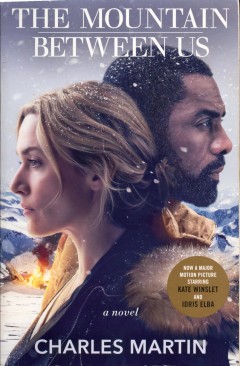
The mountain between us
When a blizzard strands them in Salt Lake City, two strangers agree to charter a plane together, hoping to return home; Ben Payne is a gifted surgeon returning from a conference, and Ashley Knox, a magazine writer, is a route to her wedding. But when unthinkable tragedy strikes, the pair find themselves stranded in Utah's most remote wilderness in the dead of winter, badly injured and miles fro…
- Edisi
- -
- ISBN/ISSN
- 9781524762476
- Deskripsi Fisik
- 330 hlm. 13 x 20 cm
- Judul Seri
- -
- No. Panggil
- 823 MAR t

The knack vol. 1 : The illustrated encyclopedia of home improvements
- Edisi
- -
- ISBN/ISSN
- 0856859753
- Deskripsi Fisik
- 21 cm x 27 cm
- Judul Seri
- -
- No. Panggil
- 603 PRE t.1
- Edisi
- -
- ISBN/ISSN
- 0856859753
- Deskripsi Fisik
- 21 cm x 27 cm
- Judul Seri
- -
- No. Panggil
- 603 PRE t.1

The knack vol. 2 : The illustrated encyclopedia of home improvements
- Edisi
- -
- ISBN/ISSN
- 0856859761
- Deskripsi Fisik
- 21 cm x 27 cm
- Judul Seri
- -
- No. Panggil
- 603 PRE t.2
- Edisi
- -
- ISBN/ISSN
- 0856859761
- Deskripsi Fisik
- 21 cm x 27 cm
- Judul Seri
- -
- No. Panggil
- 603 PRE t.2

The knack vol. 3 : The illustrated encyclopedia of home improvements
- Edisi
- -
- ISBN/ISSN
- 085685977X
- Deskripsi Fisik
- 21 cm x 27 cm
- Judul Seri
- -
- No. Panggil
- 603 PRE t.3
- Edisi
- -
- ISBN/ISSN
- 085685977X
- Deskripsi Fisik
- 21 cm x 27 cm
- Judul Seri
- -
- No. Panggil
- 603 PRE t.3
 Karya Umum
Karya Umum  Filsafat
Filsafat  Agama
Agama  Ilmu-ilmu Sosial
Ilmu-ilmu Sosial  Bahasa
Bahasa  Ilmu-ilmu Murni
Ilmu-ilmu Murni  Ilmu-ilmu Terapan
Ilmu-ilmu Terapan  Kesenian, Hiburan, dan Olahraga
Kesenian, Hiburan, dan Olahraga  Kesusastraan
Kesusastraan  Geografi dan Sejarah
Geografi dan Sejarah